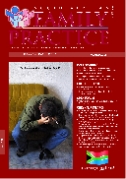The Management of Sexual Assault Victims at Odi District Hospital in the North West Province: How Can the Quality of Hospital Care be Improved?
Keywords:
sexual assault, quality improved
Abstract
Background: This six-month study at Odi Hospital in the district of Mabopane in North West Province was undertaken to gain an insight into the way in which alleged sexual assault victims experienced the treatment they received from the doctors, nurses and others, and how the quality of care they had received can be improved. Methods: The subjects of the study were the patients who presented at Odi Hospital for alleged sexual assault between 1 March and 31 August 2001. A nurse or medical doctor completed a questionnaire for each patient. In addition, individual and focus-group interviews were conducted with 20 rape victims, three rape crisis counsellors, nursing staff and doctors working in the casualty department. Results: A total of 213 patients presenting at Odi Hospital during the research period formed the sample group of this study. This group consisted of 212 female and one male patient (a small child). The majority were black (211) as only two were coloured people. The ages of the victims ranged from 2 to 70 years. The highest percentage of victims was in the age group 16 to 20 years (25.4%), followed by the age group 11 to 15 years (16.4 %) and 21 to 25 years (14.1%). A total of 68.2% of the assailants were known to their victims. The assailants' estimated age ranged from 15 to 50 years, and in almost 80% of the cases they operated on their own. Most rapes took place in the victims’ homes (36.2%) and visible lesions were found only in 32.4% of cases. Conclusion: Although everybody involved in the management of rape victims was trying his or her best, there is room for improvement in certain areas.
Published
2008-09-02
Section
Original Research
By submitting manuscripts to SAFP, authors of original articles are assigning copyright to the South African Academy of Family Physicians. Copyright of review articles are assigned to the Publisher, Medpharm Publications (Pty) Ltd, unless otherwise specified. Authors may use their own work after publication without written permission, provided they acknowledge the original source. Individuals and academic institutions may freely copy and distribute articles published in SAFP for educational and research purposes without obtaining permission.

